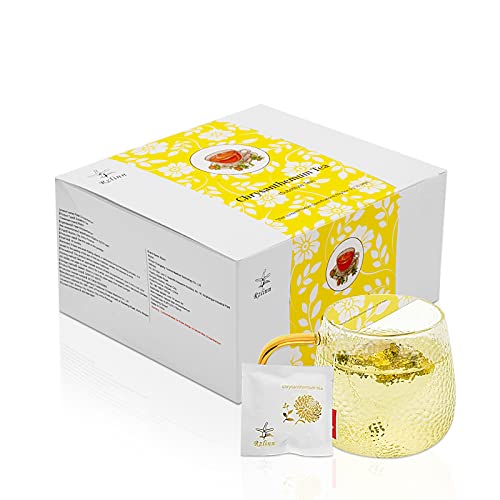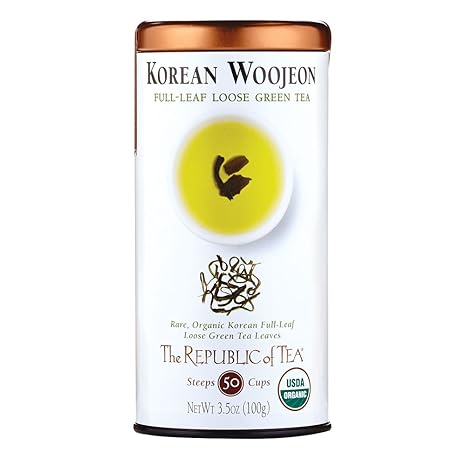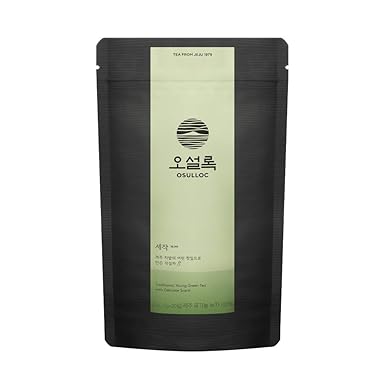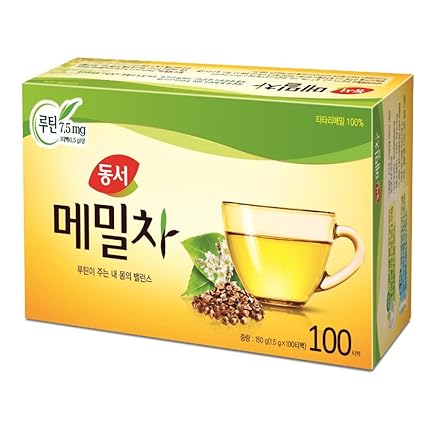Koren tea is special, picked to the lunar calendar. The most popular teas picked are green and harvested between April and May. Korean tea is rarely exported and only accounts for only 0.1% of the world’s production of tea. There are also benefits to Korean tea. The benefits of Korean Green tea start at harvest and end in your cup. ENJOY.

Things to consider before buying Korean tea
The one thing to consider about Korean tea is finding it. It’s rare if you are outside of Korea. . So when you do find Korean tea. Try some. It’s an experience. You want to find good Korean tea that is not created with chemicals and toxins. That may take a little research on your part. Knowing the area where tea is cultivated may be a bit of work. Most foreign countries are a bit more serious about toxins than the United States.
The largest production of tea plants is located in Boseong. Boseong is considered Korea’s tea-growing capital.
Premium Tea Collection gift set with various flavors and fragrances. PROUDLY MADE IN JEJU ISLAND – OSULLOC tea fields located in Jeju are certified organic in Korea and have USDA, FSC, Carbon Footprint certifications depending on the product
Korean tea
Tea was first planted in Korea during the Tang dynasty in 828. Buddhist monks were the first tea cultivators. Those monks are still producing tea to this day! During the Joseon Dynasty Korea used tea for ceremonial purposes by the upper class. The families began to adopt these same rites and rituals in their own homes. The tea ceremony was customary. Tea houses were erected and the love of tea grew and expanded. Today you can find tea houses throughout Korea.
Korean tea is a green tea with its own character. The tea is called nokcha (green tea). We should by now know the beneficial properties of green tea. Koreans are known for more than green tea. They will brew flowers, leaves, roots, spices, herbs, and more. Today we concentrate on the teas of Korea. Those teas began to get noticed in the early 2000s as we suspect from the “lose weight green tea fad”. Tea is much more prevalent than a weight loss supplement.
- FREE OF FILLERS. Korean Ginseng Instant Tea is made with Korean ginseng extract and glucose for a simple, instant tea you can enjoy year-round!
Korean Tea Pro’s and Con’s
Pros:
- Beautiful jade color
- Very sweet flavors
- Pan-fried to prevent oxidation
Cons:
- The list of teas can be overwhelming
- Unique tastes
- Finding Korean teas

Features of Korean Green Tea
Korea and its tea
We know that the monks brought tea into Korea around 835. Buddhism and the monks are credited for bringing tea in as well as cultivating it to this day.
Imagine Korea, between the largest tea countries Japan and China. Producing their own tea. It was not easy. Their history reads like a novel and a victory
1392-1910 – The Yi family took over and removed Buddhism and replaced it with Confucianism. This move also removed the interest in all aspects of tea. We can thank the Buddhist monks for working to keep the tea culture alive. There was even a tax instituted on those that participated in the tea culture. When that did not work they set out to destroy the temples and monasteries. Not much left of the tea culture.
1910-1953 – The Korean War, the Japanese Occupation, and World War II
1550’s – Whatever was left was destroyed further by a war with Japan. That was captured by many people who created teaware. This may have advanced the Japanese tea skills man. The war continued and many people took over the tea culture, each dealing it their own card of death.
1973 – We start to see the life being breathed or should we say stepped back into Korean tea. The Korean Way of Tea
1979 – While Venerable Hyo Dang’s death may have ended the tea growth but it continued to grow.
From there the tea industry starts to grow, especially green tea. The tea fields come back to life. Thanks to the Buddhist monks who continued to keep what little tea fields alive. Today you can find tea on every street and in every home.
New corn silk tea with more aromatic and soft flavor from a unique blending.
Good Source of Vitamin C, Vitamin K/Natural Source of Antioxidants, Fiber, Calcium, and Potassium
Korean Tea Service
Korea has its own tea service. The tea service is called a Darye. It’s simple but formal. It is simple to match the Buddist way of life. It’s natural and clean. It’s a time to slow down, relax, and reflect.
The name Darye means Etiquette for tea. The tea service is plain in color and made of natural materials.
The items used in a Darye are:
Tagwan – This is the teapot, it’s usually made of ceramic. Its unique style of a hollow handle makes it stand out.
Katade – These are teacups made of ceramic that is used in the summer to cool the tea.
Irabo – These are the teacups used in the cooler months, they are taller and retain more heat.
Cooling bowls – A single ceramic bowl with a divet on one side. The divot allows for pouring, the ceramic bowl allows for the tea to cool.
Tea Container – Ceramic container used to hold the tea
Tea Stand – to hold the teapot lid
Linen cloth – laid on the table to be used under the teaware
Tongs – these are wooden and used to scoop the tea leaves from their container into the pot
Coasters – These too are wooded and hod the teacups as they are served to the guests
Tea cloth – A tea cloth is different from a linen cloth. It is a small cotton towel that is folded into a square. Used to hold the teacups and other tea-ware during the tea ceremony
Wastewater bowl – This is a larger ceramic bowl used to collect the wastewater from the teacups
Below, see if you are able to find all the instruments being used in the Darye Video
Benefits of Korean Green Tea
The types of teas in Korea are endless. You will get lost in the names and lists. Here we will mention a few of the top favorite loose leaf teas. The benefits are also endless. Because Korean teas are generally green teas they have a long list of health benefits.
Green teas are chock full of antioxidants. Those antioxidants help many things including but not limited to:
- Build the immune system
- Improve brain health
- Increase metabolism
- Lower risk of heart diseases
- Fight free radicals
- Build health cells
- Korean Teas
So many teas so little time.
This herbal Chrysanthemum were introduced to Korea in the 8th century AD by the Chinese. The ancient history book "Samgukyusa" said the King "Jinsa" of ancient kingdom "Baekje" sent the five kinds of Chrysanthemum flower to Japan in 1621 AD.
Korean Green teas
Woojeon – The first harvesting of two leaves and a bud. This is the finest Korean green tea. It is first flush and picked as early as it can before the rainy season. The name Woojeon means “before the rain”. The leaves are picked and steamed, then roasted. Preserving the flavor of the tea.
The Republic of Tea, Loose Leaves Woojeon 3.5 ounces
Sejak – harvesting is at the end of April. Plucking is of three leaves and a bud. The harvesting is done after the rains. Sejak gets its name from the shape of the tea leaves and is called “sparrow tongue”. It’s picked after the woojeon. Sejak’s steamed and pan-fried. It’s a bit more vegetal (steaming) and nutty (pan-fried).
Traditional green tea is made of young, tender tea leaves collected from Osulloc's organic tea farm in Jeju. 30 grams.
Joongjak – The same plucking as sejak (three leaves and a bud) except done in the May first or second harvest. Joongiak is slightly oxidized with notes of fruit and vegetal. The tea is mild and delicate.
Unique artisan joongjak (third hand pluck) whole leaf Korean jaksul (sparrow’s beak) nokcha (green tea). 100 grams
Daejak – This is a late harvest after the 1st of June. The harvest is the third or fourth harvest and only the leaves are harvested. Named again after its shape, daejak is known as “sparrow’s beak”. Daejak is harvested around June 21st known as the summer solstice. The leaves are dark green. Notes are said to be vegetal and nutty.
OUR MOST EXPANSIVE collection of Tea Forte caffeine-free, herbal tea blends, two of each blend
Yeolcha – Later harvest as well, with leaves and stems included. This is a lower or the lowest grade of tea harvested. Fifth harvest after the 1st of June. This tea is easily available for all to buy because the price is not high.
Conclusion
While coffee still holds the number one place in the hearts of many in Korea, tea is on the rise.
Korean tea and its extensive history from Queen Heo Hwang-ok to Buddhist monks bringing tea from China. The monks planting and cultivating tea bushes and plantations. That tea was usually offered to the Buddha, as well as to the spirits of deceased ancestors. The same benefits of Korean Green Tea offered to those spirits can now be brewed in your cups and offered to your family and friends.










